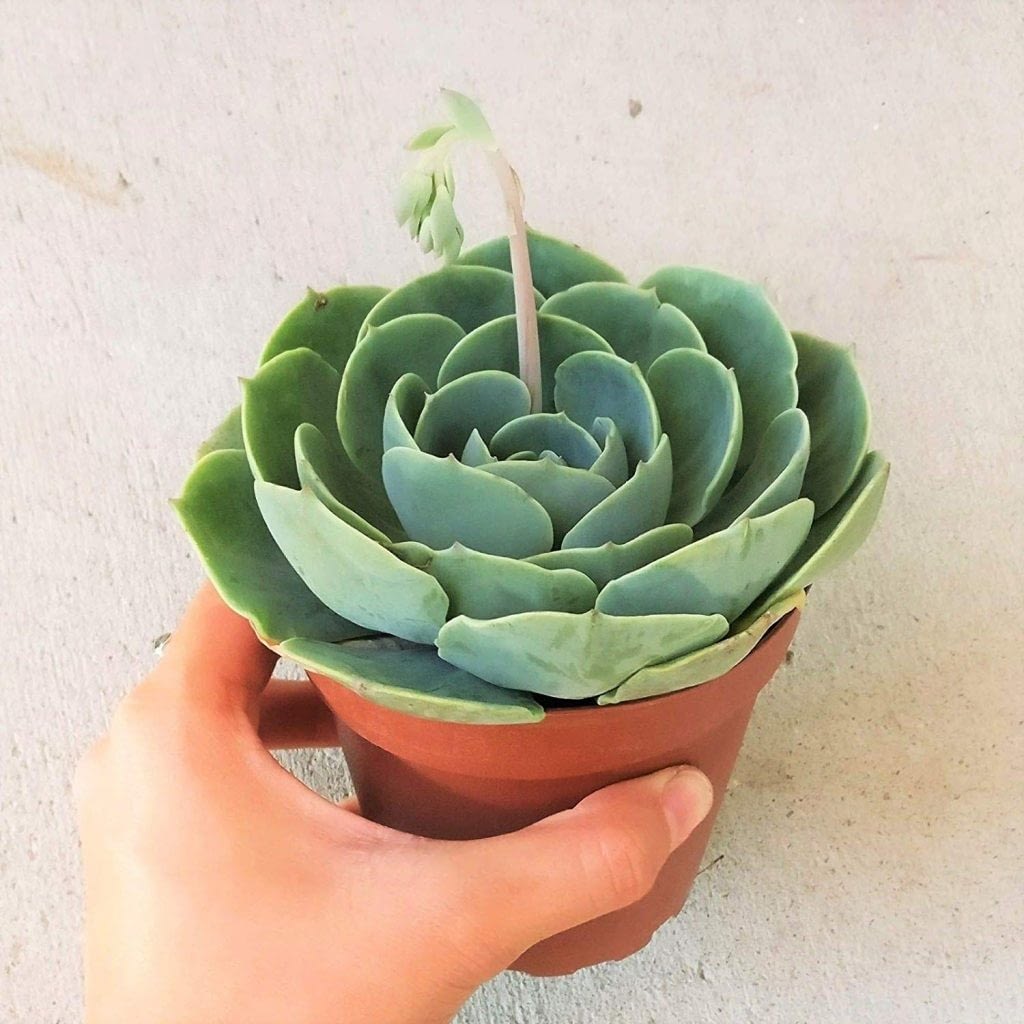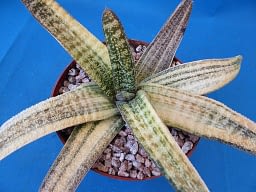Low Light Succulents. Forget about the thought that the various types of succulents plant need full sun to thrive in. Only a few numbers of succulents that thrive well in low light.

Many varieties of succulents favour bright and indirect light. They do not like full sun. The low light succulents plants are ideal for apartment owners and for those with limited garden space.
Even if you have filled bright areas indoors, you can still grow these low light succulents that do not receive as much light.
What is a low light condition?
Direct sunlight means that sun exposure reaches the plant without any obstruction. Indoor light can be considered as indirect light.
A low light area means that the location far away from window sills. It can be on a shelf against a far wall or on a living room table. Low light is not a bright but filtered light.
The areas are usually like the North facing or area that is darkened by the shadow from the outside like from tree or building.
No light at all
Low light does not mean there is no light at all. Low light succulents plant located in a room without windows at all, have to be supplied with eight to ten hours of light from grow lights.
Low light succulents can only do well if they are relocated to an area that gets brighter, and filtered light.
If plants begin to look pale and scraggly, add grow lights for two weeks or three weeks. Return the plant to the original low light place when finish. Do this then you will extend the life of low light succulents. Do this during its growing stage.
List of low light succulents
1. Gasteria Batesiana ‘Variegata’ or Ox-tongue

The leaves are smooth and seem like opposite each other. It has rough, triangular, lanceolate leaves. The alternate or common name is Ox-tongue.
Gasteria Batesiana ‘Variegata’ care
Light requirement
In the wild, the plant prefers to be in shady spots. It is likely to grow between rocks or on steep cliffs. It thrives indoors, and low light is ideal.
Watering
Water the succulent plant moderately in summer months. Water with less frequency in winter, and during the dormant growing stage.
Soil
Sandy soil or loam soil with added leaf mold is ideal.
Fertilizer
Only fertilize if you discover the leaves turning a brown color. Apply a liquid nitrogen-based fertilizer.
Humidity
During the summer months, the plant would require humidity. Use a mist spray during hot summer months.
2. Kalanchoe Blossfeldiana

This low light succulent plant is grown for its long-lasting, beautiful, vibrant color flowers. When the flowering is done, relocate to a bright indoor area or plant outdoors.
Kalanchoe Blossfeldiana care
Light
When in full bloom, it can be placed in low light, even though it prefers bright filtered light or full sun.
Watering and soil
This plant needs proper watering. During the summer months and flowering, the plant needs to be watered generously. Wait for 2 weeks until the soil gets dry again and water the plant. The key is to have a fast-draining soil and succulent potting soil.
Fertilizer
Apply only a half-strength liquid fertilizer once a month from early spring months to summer months. Use a general-purpose fertilizer like 3-2-3 NPK fertilizer for succulent. This is to make sure to get the biggest, most beautiful, and best blooms year after year.
Temperature
The plant thrives well in dry air and normal room temperature.
3. Schlumbergera Truncata or Christmas Cactus or Crab Cactus

Schlumbergera Truncata care
Light
This plant can tolerate a low light to medium light most part of the year. But during winter months, it has to be relocated to filtered light areas. To prevent the flowers or the buds to fall off, do not switch light level when in bloom or bud.
Watering and soil
The plant is happy to be in porous soil. Which is made from coarse particles that leave pores to facilitate the movement of air and water through the soil. Sandy soil is suitable. Water well most part of the year when you see that the soil is dry. Stop watering when the flowering stage is over. Reduce watering from fall months through the spring months.
Fertilizer
Fertilize plants every month since new growth begins in late winter or early spring, and the summer using a one-quarter strength liquid fertilizer. Reduce fertilizer during the fall months and early winter months.
Temperature
The plant prefers a high humidity area with normal room temperature.
4. Zamiocalcus Zamiifolia or ZZ Plant

ZZ plant or Zamiocalcus Zamiifolia has been around for centuries, originating from the African regions. With its dark green, wide and attractive, leaves, it becomes very popular traits for offices and homes. ZZ plant tolerates drought temperature.
ZZ Plant care
Light
Zamiocalcus Zamiifolia or ZZ plant thrives well in numerous light conditions but it does not like direct sunlight. It accepts low light conditions and its smooth or waxy leaves reflect sunlight and really brighten rooms.
Soil
The ZZ plant does not require a special type of potting soil. The plant will be happy to be in well-drained potting soil.
Watering
ZZ plant needs to be watered only when the soil is dry. The rhizomes store water, that is the reason why the plant does well during droughts and can still thrive with little watering.
Fertilizer
Fertilize the ZZ plant with a liquid houseplant fertilizer or seaweed-based fertilizer or a nitrogen-based fertilizer (3-2-1 NPK formulation or 20-20-20 NPK formulation). In its growing stage, you have to fertilize the plant once a month. apply a balanced liquid houseplant fertilizer (20-20-20) once a month when watering.
Temperature
ZZ plant can tolerate almost all weather conditions but do not place them in direct sunlight.
5. Rhipsalis Baccifera or Mistletoe Cactus

Mistletoe cactus or Rhipsalis Baccifera is a tropical succulent plant that originated from rainforests in warm regions. Mistletoe cactus is unique in its requirements for low light and moisture.
Rhipsalis Baccifera or Mistletoe Cactus care
Light
This succulent plant likes the morning sun and low light afternoon shade is good. Avoid direct sunlight.
Soil
The best soil for this plant is to mix peat moss with bark (or vermiculite) and coarse sand with a 2:1:1 mixture ratio. It must have a well-drained slightly acidic soil with.
Fertilizer
The Mistoetle Cactus plant needs low fertilizing and moisture. A half-strength liquid cactus fertilizer from April to September, once per month. Do not feed the plant after the flowering period.
Watering
The plant needs watering regularly in spring months and summer months, but stop watering in winter months.
6. Aloe Aristata

Aloe Aristata is a succulent plant that has a small size and hardy leaves. It is popular as an indoor plant. Alternate names are Lace Aloe, Guinea-fowl Aloe or Torch Plant.
Aloe Aristata care
Light
The plant is suitable in bright light as well as low-light or filtered light. To prevent dying, keep out of direct sunlight.
Soil
The Lace Aloe enjoy and happy to be in well-drained soil. Sandy soil will keep the Lace Aloe plant healthy. To improve soil drainage, use and mix sand with succulent potting mix.
Fertilizer
Apply liquid fertilizer to feed Lace Aloe lightly. Then apply lightly again during the active growth period. Feed every two weeks.
Watering
Water the plant well once a week. Pay attention only to water when the soil gets dry. Do not water the plant during cold winter months. Feeding during the active growth stage will keep the potting mixture thoroughly moist. Stop watering to prevent the potting mixture from drying out.
Temperature
Aloe Aristata or Lace Aloe succulent plant thrives well in normal room temperatures. The plant tolerates dry air. To stimulate flowering, provide the plants a winter rest at a temperature of no more than 50 °F (10 °C).
How to grow and care low light succulents
Generally, low light succulents come in a wide variety of types of plants, caring for shade-loving succulents is different from plant to plant.
It is not a one-size-fits-all approach. You have to discover, learn and evaluate the setting to determine which low light succulents can thrive in your specific conditions.
Succulents generally will grow well with sunlight for some part of every day. If there is only limited light, the succulent will become weakened leggy and will not flower.
It is recommended to provide at least six hours daily of low light or filtered sunlight or growlights is for low light succulents. Because succulents hold and store water for their needs. Most low light succulent is able to grow well with irregular watering.
Occasional watering is preferable to small amounts of water applied on a regular basis. Use containers or pot equipped with drainage holes.
All low light succulents need fast-draining soil to prevent the roots and stem from standing in water. This will cause root and stem rot.
Choose a planting mix for orchids when planting an epiphytic succulent. Choose a cactus mix for the soil.
Recommended accessories
Pot with drainage holes for low light succulents

Soil for low light succulents

Growlights

Fertilizer
